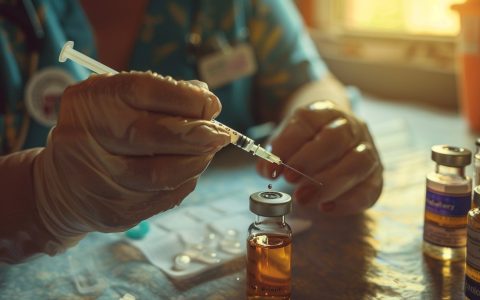
Male circumcision is considered a way to lower the chance of infections affecting male private parts. This procedure, which involves removing the foreskin from the penis, has gained notice because it helps in decreasing the number of diseases like sexually transmitted infections (STIs), urinary tract infections (UTIs), and other problems in the private area. By removing the skin, circumcision may offer protective benefits by decreasing the likelihood of pathogen transmission and promoting genital hygiene. In this article, we’re going to look at infections that male circumcision targets and how it improves reproductive health.
What Is Male Circumcision?
Male circumcision is a surgical method that involves removing the foreskin, the retractable fold of skin covering the head of the penis. People commonly perform this procedure for cultural, religious, and medical reasons. They usually carry it out during infancy or early childhood, although it can also be done later in life for various reasons.
Various factors, including cultural, religious, and personal beliefs, influence the decision to undergo male circumcision. However, one significant rationale behind male circumcision is its health benefits, particularly in reducing the risk of certain infections. Understanding these potential health benefits is essential in evaluating the decision to undergo circumcision.
1. Improved Hygiene
Circumcision makes it easier to keep the private area clean because there’s no need to pull back the foreskin to clean underneath it. This can lower the risk of bacterial proliferation and associated infections, especially in individuals with poor hygiene habits.
2. Low Risk of Infections
Circumcised males have a lower risk of UTIs, sexually transmitted infections, and certain penile infections. These infections are often more prevalent in uncircumcised males due to the environment created by the foreskin. This environment can facilitate the growth of pathogens and increase the risk of infection.
3. Prevention of Penile Problems
Circumcision can eliminate or reduce the risk of foreskin-related issues. These issues include phimosis and paraphimosis. By removing the foreskin, circumcision may prevent these conditions from occurring or recurring, thus improving overall penile health.
Impact of Male Circumcision Vs. Non-Circumcision
Among reproductive-aged men and women, HIV/AIDS keeps to be the leading cause of death despite significant advances in the fight against the virus over the last 30 years. There is a 50-60% reduction in the incidence of female-to-male HIV transmission when medical male circumcision is performed.
When looking at the impact of circumcision on STI rates, different sources have come to different conclusions. The inside surface of the penile foreskin may be an access point for viruses, putting uncircumcised males at a higher risk of STIs. Circumcision may have a different effect on genital ulcerative illnesses depending on where the ulcers are located. Although syphilis and herpes lesions are more often seen on the glans penis, circumcision may provide better protection against chancroid, which may manifest on both the inside and outside of the foreskin.
So, studies have shown that men who have their penis circumcised are less likely to get genital herpes, syphilis, genital ulcer disease, and high-risk strains of HPV, which may cause cancer, compared to men who do not get a circumcision.
How Does Circumcision Targets Various Infections?
1. HIV/AIDS
Male circumcision has been recognized as an essential factor in reducing the risk of HIV transmission in men. The foreskin is particularly vulnerable to tears and abrasions during sexual intercourse, providing a gateway for HIV transmission. By removing the foreskin, the likelihood of HIV entry into the body is reduced. Thereby lowering the risk of infection that male circumcision targets.
2. Human Papillomavirus (HPV)
Human Papillomavirus HPV is a prevalent STI known to cause genital warts and various cancers, such as cervical, penile, and anal cancer. Moreover, male circumcision reduces the risk of Human Papillomavirus infection and transmission by decreasing the surface area where HPV can reside. Thus limiting its ability to establish an infection. Additionally, circumcision may also lower the risk of HPV-related cancers in both men and their female partners.
3. Herpes Simplex Virus (HSV)
Male circumcision may help prevent HSV, commonly known as genital herpes, another sexually transmitted infection. The moist environment under the foreskin provides an ideal setting for viral replication. Thus making uncircumcised men more susceptible to HSV infection. However, by removing the foreskin, circumcision may decrease the likelihood of HSV transmission.
4. Bacterial Infections
The foreskin can hold various bacteria, including those responsible for sexually transmitted infections such as syphilis and gonorrhea. Circumcision reduces the risk of these bacterial infections by eliminating the moist and warm environment beneath the foreskin where bacteria can grow. Additionally, circumcision may lower the risk of urinary tract infections in infants and young boys. These infections often occur due to bacteria entering the urinary tract via the foreskin.
5. Phimosis
Phimosis is a condition where the foreskin gets tight, thus making it difficult or impossible to pull back over the head (glans) of the penis. This can lead to difficulty urinating, pain during erections, and an increased risk of inflammation or infection. However, healthcare providers may recommend circumcision in cases of severe or recurrent phimosis that do not respond to less invasive treatments such as topical steroids or stretching exercises. This recommendation aims to relieve the symptoms and prevent complications.
6. Balanitis and Balanoposthitis
Balanitis is the inflammation of the glans, known as the head of the penis. Whereas balanoposthitis is the inflammation of both the glans and the foreskin. Poor genital hygiene often causes these conditions, which can lead to bacterial or fungal infections. Uncircumcised men are at an increased risk of developing balanitis and balanoposthitis due to the difficulty of maintaining proper hygiene under the foreskin. Circumcision reduces the risk of these inflammatory conditions by eliminating the foreskin, making genital hygiene easier to maintain.
Male Circumcision: Fight Against Certain Infections
Circumcision has been associated with reducing the risk of specific infections that male circumcision targets, such as HIV, STIs, and UTIs. Various factors, including cultural and personal beliefs, influence the decision to undergo circumcision. Understanding the potential health benefits of circumcision is essential. However, it is crucial to weigh these benefits against the risks and consider individual circumstances when making decisions about male circumcision.



